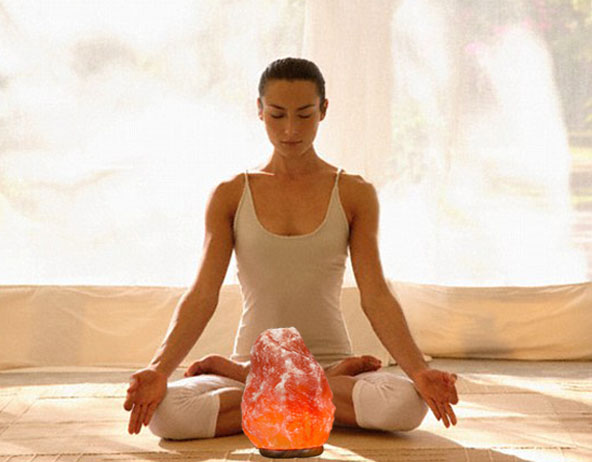There are many different kinds of meditation, but all of them are enhanced by the use of Himalayan Salt Lamps.
Meditation is a practice where an individual trains the
mind or induces a
mode of consciousness, either to realize some benefit or for the mind to simply acknowledge its content without becoming identified with that content,
[1] or as an end in itself.
[2]

The term
meditation refers to a broad variety of practices that includes techniques designed to promote relaxation, build internal energy or life force (
qi,
ki,
prana, etc.) and develop compassion,
[3] love, patience, generosity and forgiveness. A particularly ambitious form of meditation aims at effortlessly sustained single-pointed concentration
[4] meant to enable its practitioner to enjoy an
indestructible sense of well-being while engaging in any life activity.
The word
meditation carries different meanings in different contexts. Meditation has been practiced since antiquity as a component of numerous religious traditions and beliefs.
[5] Meditation often involves an internal effort to self-regulate the mind in some way. Meditation is often used to clear the mind and ease many health concerns, such as high
blood pressure,
[6] depression, and
anxiety. It may be done
sitting, or in an active way—for instance,
Buddhist monks involve awareness in their day-to-day activities as a form of mind-training.
Prayer beads or other ritual objects are commonly used during meditation in order to keep track of or remind the practitioner about some aspect of that training.
Meditation may involve generating an emotional state for the purpose of analyzing that state—such as anger, hatred, etc.—or cultivating a particular mental response to various phenomena, such as
compassion.
[7][8][9] The term "meditation" can refer to the state itself, as well as to practices or techniques employed to cultivate the state.
[10] Meditation may also involve repeating a
mantra and closing the eyes.
[11] The mantra is chosen based on its suitability to the individual meditator. Meditation has a calming effect and directs awareness inward until pure awareness is achieved, described as "being awake inside without being aware of anything except awareness itself."
[12] In brief, there are dozens of specific styles of meditation practice, and many different types of activity commonly referred to as meditative practices.
[13 (https://en.wikipedia.org/wiki/Meditation)
In general with Himalayan Salt Lamps, you can divide meditation practices into two kinds: passive and active.
In passive mediation, you can simply stare at a salt crystal lamp for several minutes a day, without any other kind of lighting, either in a lotus position if you master it, or seated across from it. You might try what is called “emptying your mind” and concentrating just on this one focal point. Let the thoughts that come to you pass through, without trying to examine them or get rid of them. Don’t even try to find any kind of significance or coherence in them, just let them go, like ripples that disappear from a pond.
Active meditation consists of concerning on specific thoughts. These might be in the form of words, sounds or images. This kind of meditation will help you evolve. However, it requires a good knowledge of symbolism and perfect mastery of visualization.
Whatever kind of meditation you practice, the Himalayan Salt Lamps will act on you like a mental purge, emptying thoughts from you that harm your evolution or balance. These thoughts may arise within you in different ways on subsequent days and probably through your dreams, allowing you to settle some internal conflicts.
We have this available on https://himalayansaltusa.com/natural

